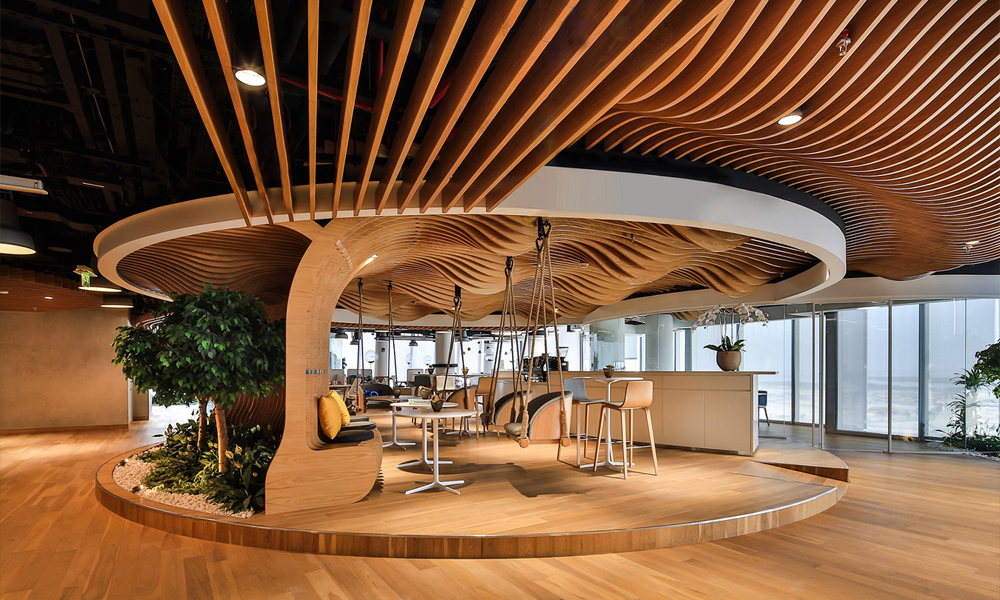Created more than 30 years ago by the US Green Building Council, the LEED (Leadership in Energy and Environmental Design) standard is the most widely used green building rating system in the world. Available for virtually all building types, the LEED benchmark provides a framework for healthy, highly efficient, and cost-saving green buildings. LEED certification is a globally recognized symbol of sustainability achievement and leadership. What’s more, hectare for hectare, Dubai features more LEED certified structures than any other city-state in the world.
As of 2021, there are 1,109 LEED certifications in Dubai – no wonder, then, that in 2019, when the emirate received the Platinum Rating in LEED for Cities, it was the first of its kind in MENA and the Arab world
LEED is in fact the product of an extremely challenging global objective: the driving vision of the US Green Building Council is that buildings and communities will regenerate and sustain the health and vitality of all life within a generation. So, the mission underlying LEED is to transform the way buildings and communities are designed, built and operated, enabling an environmentally and socially responsible, healthy, and prosperous environment – one that actually improves the quality of life, while being a globally recognized symbol of sustainability achievement and leadership.
Contrary to its popular image, LEED isn’t limited to specific types of architect-led, prestige projects: it’s actually applicable to all building types and all building phases including new construction, interior fit-outs, operations and maintenance, and core and shell. It can also be ‘retro-fitted’, with the building receiving the designation LEED – Existing Building Operations and Maintenance. Moreover, LEED is often linked to the international standards of ISO 14001 and OHSAS 18001.
Why bother to LEED?
LEED-certified structures aren’t ‘nice to have’ badges of honour: they’re intended to save money and give commercial rewards in addition to the obvious benefits of Sustainability. There are three main commercial advantages –
Competitive edge
Research by Gartner shows that 61% of corporate leaders believe that sustainability leads to market differentiation and improved financial performance.
Attracting high-value tenants
Internationally, LEED-certified buildings command the highest rents, while lease-up rates typically range from average to 20% above average; vacancy rates for green buildings are an estimated 4% lower than non-green properties.
Performance Management
LEED is the world’s leading green building project and performance management system. It delivers a comprehensive framework for the one-stop analysis of green building design, construction, operations and performance.
LEED in Dubai
Not only is Dubai home to a high concentration of LEED-compliant commercial properties, but also features 804 LEED-certified homes. This means that the emirate actually has a combined area of more than 65.24 million sq.ft. under LEED governance – and there are currently no less than 312 types of certified LEED activity across the full spectrum of those properties.
It is also an often-agreed priority for the emirate’s 32 free zones to feature LEED-compliant properties – and classic examples are the One JLT building in the DMCC freezone, Pacific Controls HQ in Dubai TecnoPark and the ABN Amro Bank in Dubai Outsource Zone.
LEED properties also align well with the free zones’ commitment to offer added-value for enterprise-level tenants, assuring a high quality working environment for staff and clients alike. Moreover, Dubai also leads the MENA region in retro-fitting with LEED specifications, with a classic example being the much-feted Dubai Chamber of Commerce & Industry Head Office, in Deira Creekside, the first building in the Arab world to be retro-awarded Platinum certification for its Health, Safety and Environment Management Systems.

